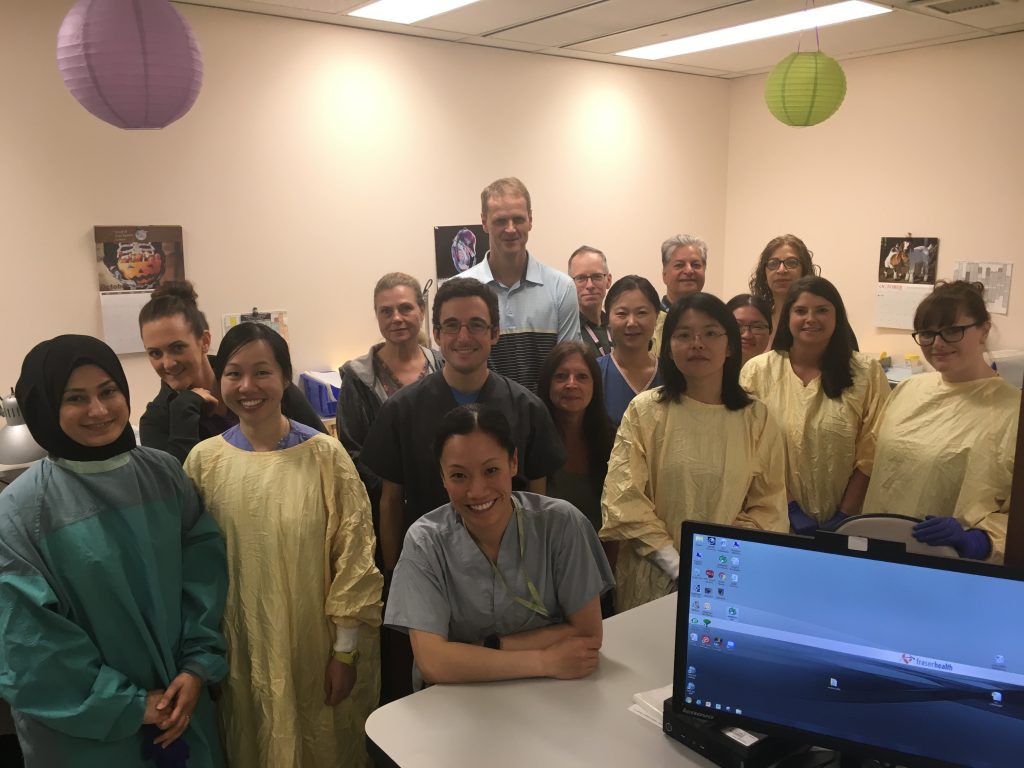- 2019
|
- Runner-Up
|
- Leadership in Quality
Royal Columbian Hospital (RCH) had been trying for more than a decade to reduce the time it took for patients to receive diagnoses after submitting tissue samples. That’s when Carolyn Shiau led a completely different approach and engaged her team along the way.
When a physician takes a biopsy or performs a surgical operation, a tissue sample is sent to the laboratory for diagnosis. A complex process follows, requiring multiple people and machines to create tissue blocks and glass slides of the specimens before a pathologist can make a diagnosis.
The time that it takes from when the specimen arrives to the laboratory to when the final diagnosis report is sent back to the original physician is called turn-around-time (TAT). The regional TAT benchmark for routine small biopsy cases aims for 70% of cases to be completed within 72 hours. Historically at RCH, only 20% of routine cases were completed within 72 hours, with most cases taking two to three weeks. This delayed diagnoses, patient follow-ups and treatments, which pressured technologists to work faster and led to unintended errors.

Carolyn knew there had to be a better way. She started by working with front-line technologists to improve the quality of the specimen slides. With better slides, pathologists required fewer slides and blocks per case to make a diagnosis. Reducing the number of glass slides and blocks per case resulted in time savings equivalent to 2.0 full-time-equivalent technologists’ workloads.
After seeing Carolyn’s collaborative approach, technical staff generated even more ideas about how to improve TAT by changing the lab’s case triage system. Literally overnight, the laboratory – with no extra staff, no extra time, and no extra equipment – was able to complete the technical work on time and meet the TAT benchmark. Patients who would have previously waited two to three weeks for an answer could now receive a diagnosis within three business days. 70% of all routine cases are completed with TAT. These results have an economic benefit as well: they have been externally audited by Doctors of BC, showing an annual cost avoidance of $112,000 for the RCH anatomic pathology laboratory alone.
A significant culture change accompanied these improvements. Technical and professional staff within the laboratory are now communicating better within a safe environment where feedback is given without blame and with practical strategies for how to improve. The team is now open to trying new ideas to improve patient care. Carolyn’s leadership encouraged each person to have ownership in the process of creating good work, which is perhaps more impressive considering she was only three years into her clinical practice when she took on this work.
Carolyn’s leadership has made her a point-person for staff throughout Fraser Health who want to improve workflows. She has presented at numerous conferences about her approach to quality within the hospital’s pathology laboratory, and to numerous groups about her approach to sustainable culture change, ensuring that what was once a project within just one hospital’s lab will have an impact throughout the province.

